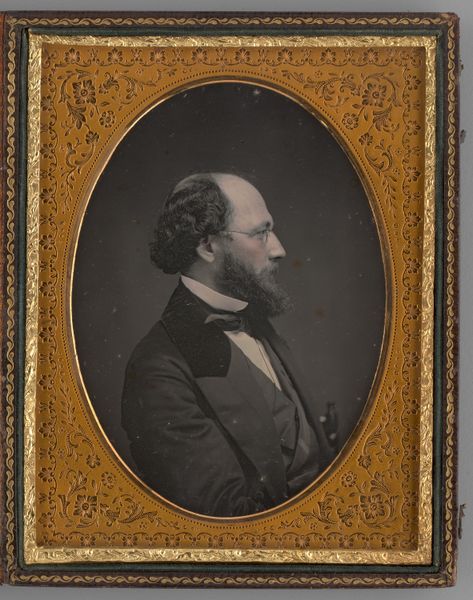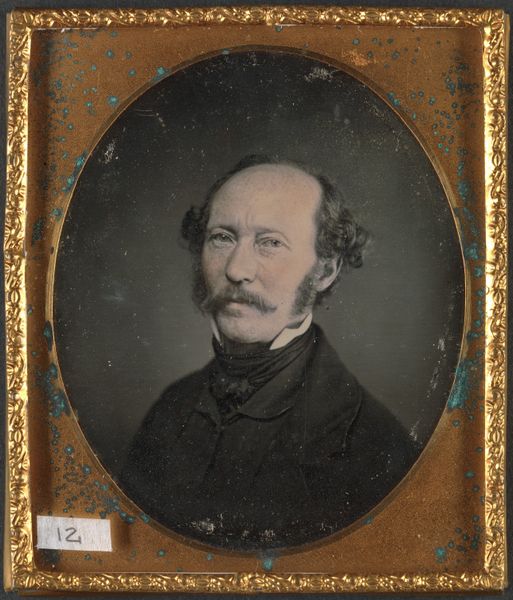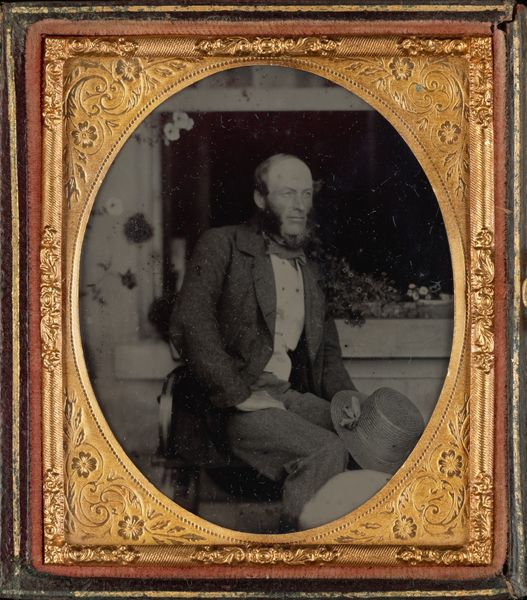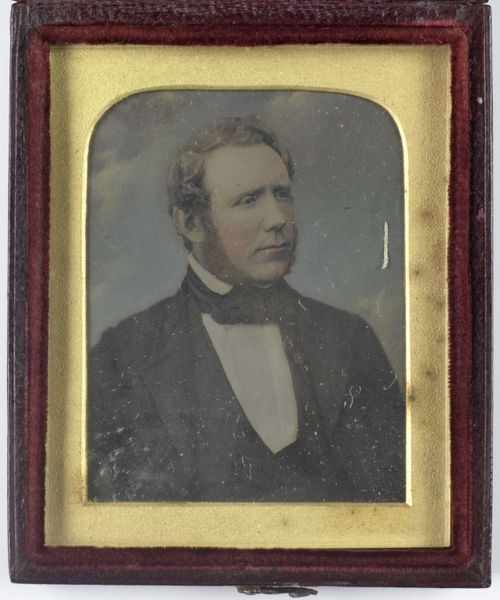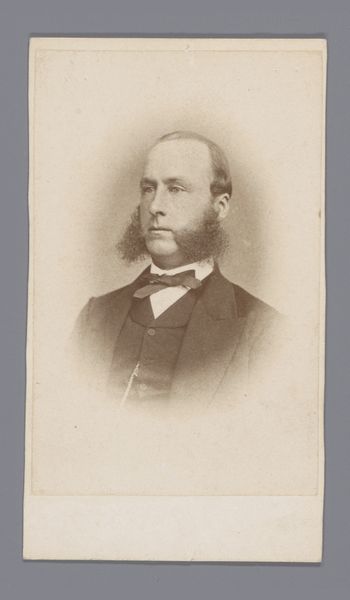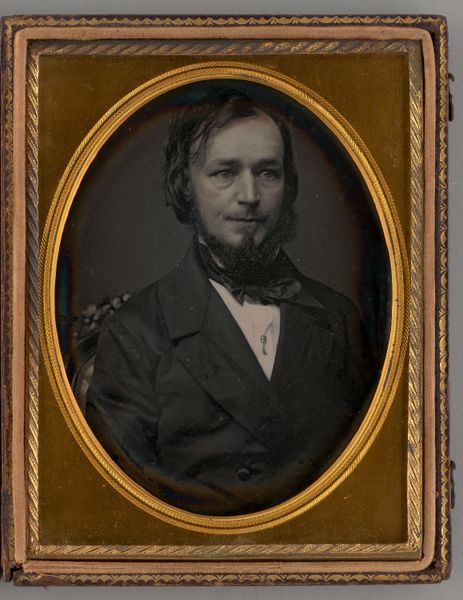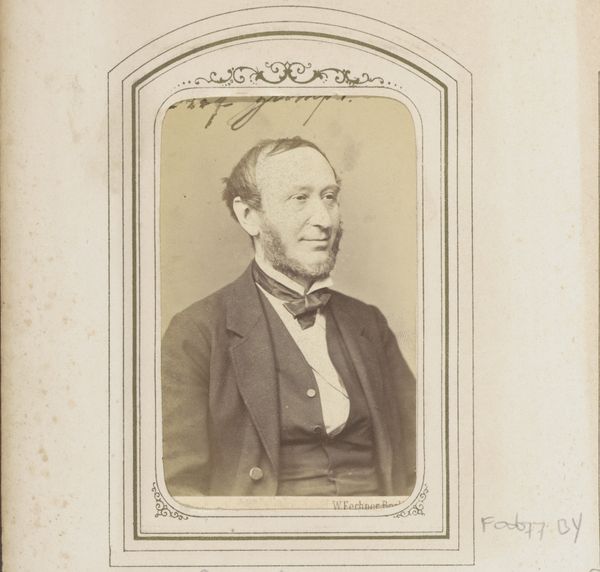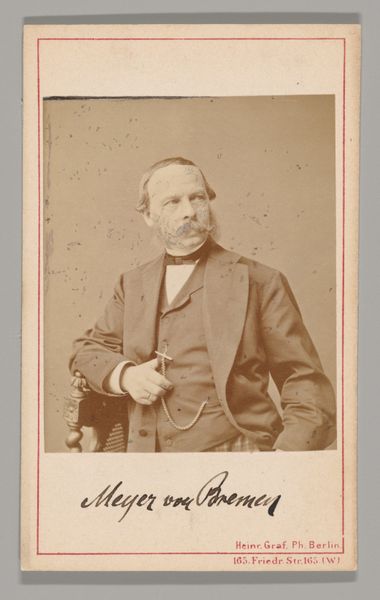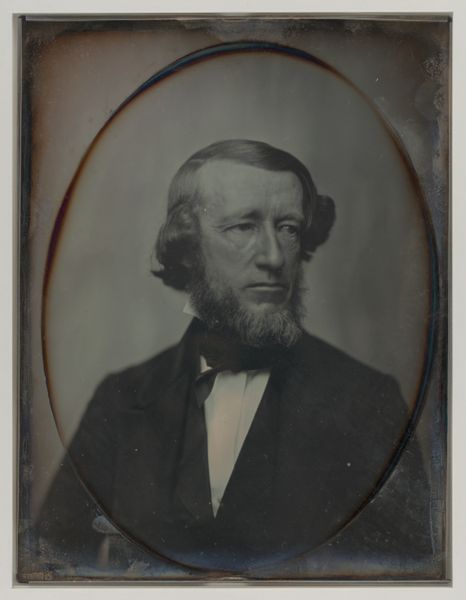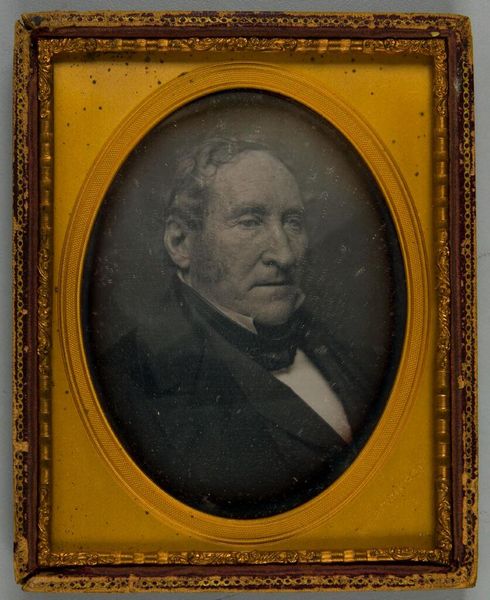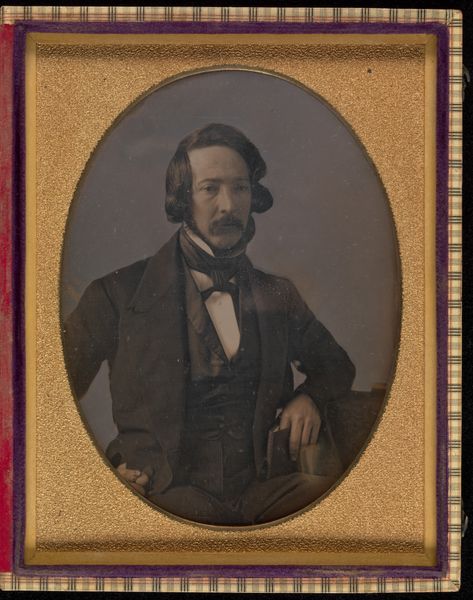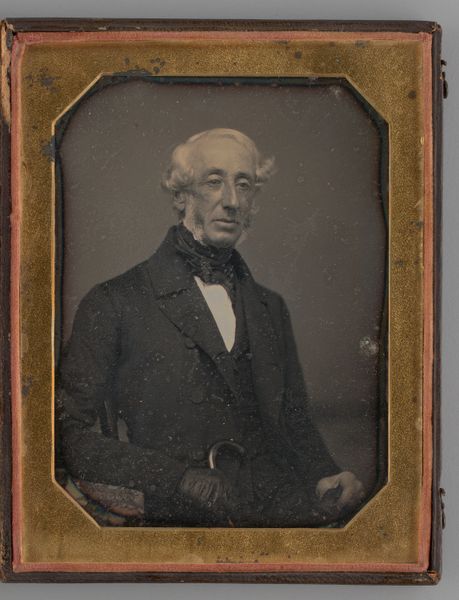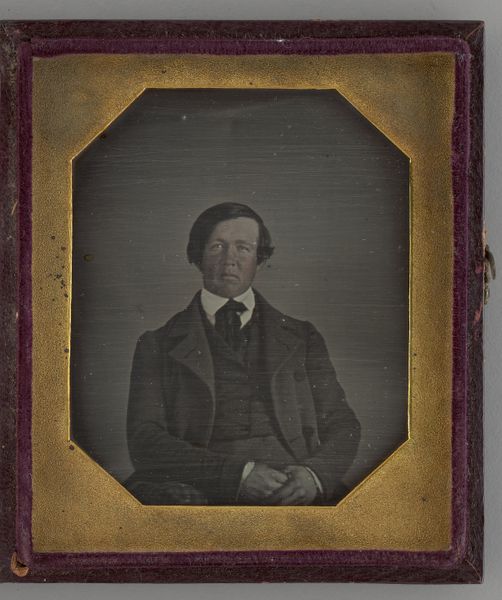
daguerreotype, photography
#
portrait
#
16_19th-century
#
daguerreotype
#
photography
#
portrait art
Dimensions: Image: 6.7 x 5.4 cm (2 5/8 x 2 1/8 in.) Case: 1.6 x 9.4 x 8.3 cm (5/8 x 3 11/16 x 3 1/4 in.)
Copyright: Public Domain
Editor: So, this is "William Langenheim," a daguerreotype created sometime between 1855 and 1858 by W. & F. Langenheim. The image is small, framed ornately, and evokes a sense of somber dignity. What catches your eye in this piece? Curator: You know, it’s like holding a little echo of the past, isn't it? What strikes me is the almost haunting clarity. The daguerreotype, a photographic process so fragile and fleeting, somehow manages to freeze this man, William, in time. Do you ever wonder about his life, gazing at those eyes that have seen things we can only imagine? The gilded frame is fascinating – such extravagance dedicated to a single image. It makes me question the value they placed on portraiture. It was an indulgence, a treasure, something profoundly precious. Editor: It is quite intense! The frame almost feels like a stage. Why this kind of artistic approach for portraits? Curator: Well, in those days, photography was still finding its footing as an art form, wouldn't you agree? The ornate framing maybe elevates the subject. Maybe it was to rival painted portraits which were really markers of social status at the time. Editor: I didn't think about photography trying to establish itself as an artistic expression next to painting. It seems this daguerreotype contains stories layered deeper than its surface. Curator: Exactly. And it all boils down to appreciating the delicate dance between light, chemistry, artistry and legacy, wouldn’t you agree?
Comments
No comments
Be the first to comment and join the conversation on the ultimate creative platform.
